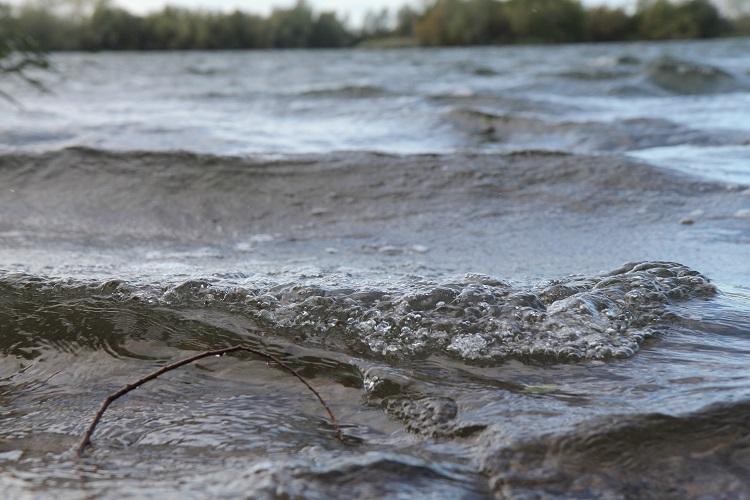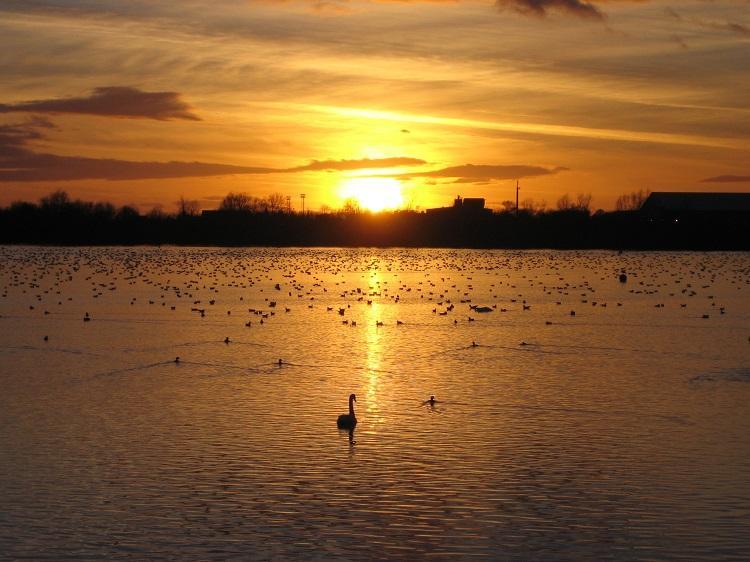On the face of it, a low-stocked big pit is carp fishing’s ultimate challenge – but it needn’t be so daunting. In terms of hooking them, carp in tiny pressured pools are probably harder to catch than their free-range open-water cousins. The biggest problem is finding them in the first place.

Locating carp in low stocked big pits is key to your success
In the colder months, locating a small stock of carp in a huge expanse of water can be close to soul destroying, so it’s definitely not the time to start a campaign on these waters. But come spring and summer, identifying these needles in a haystack can become easier than you might imagine if you’re prepared to put in the effort.
Don’t ignore the margins
So where should you start? There’s a common phrase is carp fishing that ‘the margins are the biggest feature of any lake’, and it’s true. Big-pit carp love to come in close, which is a bonus for the watching angler.

The best thing you can do is keep on looking. No matter how big the lake is, keep marching round it, stopping to inspect likely looking margin spots. If there are no fish present when you visit, try lobbing in a few handfuls of bait and coming back to check on the progress of the area.
The north eastern bank will receive the warm winds from the south west
If access is tricky or you really are on limited time then focus your observation efforts on areas that are logically likely to hold carp. That means the north-eastern bank which receive warming south-westerly winds, and areas that see the most sunlight, or get the first rays of morning light. These are locations that cold-blooded carp are naturally drawn to.

Similarly, any marginal snags like fallen trees or, in the case of some extreme pits, man-made obstacles like submerged cars are good starting points in your hunt for fish-holding areas.
Obviously, the fish won’t just skirt around the margins all day waiting for you to spot them. Big pits are the product of gravel extraction and are full of troughs and plateaux that will attract fish. Finding carp among billions of litres of water can be very time consuming, but there are plenty of things you can do to help.
Climbing trees will give you an excellent vantage point
The old-school method of climbing trees to get a better vantage point can be a massive help. It really is incredible what a bit of elevation can do to open your eyes to what’s beneath the water’s surface. A pair of polarised glasses is essential in this situation. Amber lenses are a good all-round choice, helping to maximise light levels on cloudy days. It should go without saying that climbing trees can be a risky pursuit, so always play it safe and don’t risk your life for the sake of a carp.
Using a boat is a huge advantage to identify feeding spots
Staying on the old-school theme, getting out in a boat can be seriously advantageous on a big pit. First, check that you’re allowed to, and always wear a life jacket. Once out on the water, take your time – don’t be afraid to drift on the breeze and just observe. It’s amazing how close you can get to fish if you’re not drilling through the water with an outboard or slamming oars through the surface.

If you’ve got the ability to get afloat then an aquascope can be a very worthwhile purchase. Essentially a traffic-cone-shaped viewing aid, these devices really do help you see beneath the surface chop and inspect what’s going on below. They’re great for checking on bait and rigs, and for scouting out new areas.
Lake features such as gravel bars can often be seen using Gogle Maps
On a more high-tech note, Google Maps is an essential part of the modern carper’s armoury. On big pits, a top-down satellite image can reveal huge gravel bars or depressions that you just cannot see from the bank. It’s well worth opening Google Earth and viewing their mapping imagery through the years, as you can sometimes get shots of a working pit before it was flooded, helping you to piece together the location of service roads and excavation holes that are now submerged.

Drones whilst controversial can save hours when trying to locate carp
Taking it one step further, a drone can be the ultimate reconnaissance tool on a big pit. They are undoubtedly expensive and controversial, but if you’re able to borrow one and have permission to fly over the area then as well as revealing hotspots they can also show you exactly where the fish are. Is this cheating? Like most things in carp angling, that’s a decision for the individual angler. Sonar-based fishfinders were just as contentious not long ago, but attitudes seem to have softened as more accessible technology has flooded the market. A castable device like the Deeper or FishSpy is a handy tool on a big pit, but there is still watercraft involved in assessing and interpreting the data.
Pre baiting with large beds of particles will ensure carp keep returning to the area
Once you’ve found the fish on a large water you are well on track. Bait and rig choice is dependent on a number of factors that come into play wherever you fish. If the venue is home to other species of fish then you may want to focus on larger boilies and particles like tiger nuts, although creating a free-for-all feeding situation for all species can draw in carp and clear weed from spots.
Time-honoured big-pit baiting tactics seem to revolve around the introduction of big beds or particles like corn and hemp to get the fish going, followed by more and more boilies as you prepare to angle for them.
The good thing about low-stocked big pits is the general lack of pressure on the carp. This enables you to keep rigs simple and tangle-free. Your main focus really should be all about location, location, location…





